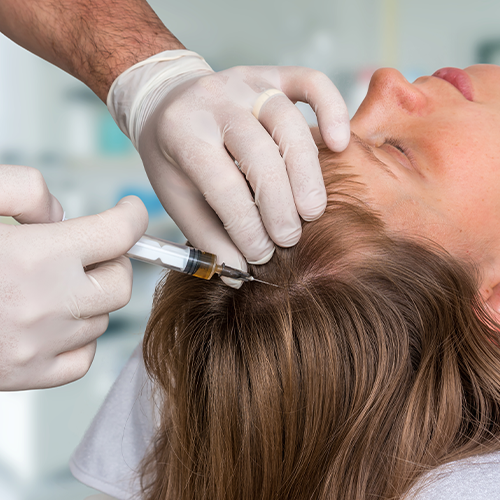
Epilepsy is a neurological disease caused by abnormal electrical activity in the brain. The disease manifests itself with sudden and uncontrollable muscle spasms, loss of consciousness, and other symptoms known as epileptic seizures. There are many methods for treating epilepsy, but medication may not be sufficient for some patients. Epilepsy Pacemaker treatment is an effective option. In this method, a device is implanted in the area of the brain where epileptic seizures originate, and this device sends signals to regulate the electrical activity in the brain. Epilepsy Pacemaker treatment can be applied to epilepsy patients whose seizures cannot be controlled, and can improve their quality of life.
Epilepsy Pacemaker treatment requires surgery. The patient is given general anesthesia during the surgery, and a device and battery are implanted in the brain. The patient's recovery process after the surgery may vary depending on the patient's general health and the area where the surgery was performed. However, generally, patients are discharged a few days after the surgery and can return to normal activities within 2-4 weeks.
At Orenda Health, we are experts in determining the most suitable treatment method according to the needs of our patients. Epilepsy Pacemaker treatment has helped patients control their seizures. However, Epilepsy Pacemaker treatment may not be suitable for every patient, and it is important to follow your doctor's recommendations. Orenda Health supports its patients with experienced doctors and healthcare professionals in Epilepsy Pacemaker treatment. You can contact us to discuss treatment options. Regain your health with Orenda Health!
Brain Pacemaker Method
Deep Brain Stimulation is a safe method used for the treatment of neurological diseases. It is effective in treating movement disorders such as Parkinson's disease, essential tremor, and dystonia, as well as other neurological conditions like chronic pain.
The treatment involves a small device implanted in the brain that helps control abnormal movements. It is usually performed through surgery under general anesthesia. During the surgery, a small battery is placed in the brain that sends signals to control abnormal movements.
The recovery process after the treatment may vary depending on the patient's overall health and the area where the treatment was done. However, patients are usually discharged a few days after the surgery, and the healing process begins. During the recovery process, your doctor may recommend specific exercises and treatments. Patients continue to have regular check-ups after the treatment, and medication may also continue if necessary.
Deep Brain Stimulation is an effective option for the treatment of neurological diseases. However, it is important to consult your doctor to determine if the treatment is suitable for you. At Orenda Health, we provide support to our patients throughout the Deep Brain Stimulation treatment process with our experienced doctors and healthcare professionals. We are here to provide all the support you need during and after the treatment.
Antidepressant Pills
Depression is one of the most common mental disorders worldwide and often requires medication. However, in some cases, depression may require electroconvulsive therapy (ECT) for individuals who do not respond to medication or psychotherapy.
ECT works by sending small electrical currents to specific regions of the brain. This helps regulate neural activity in the brain and alleviate depression symptoms.
ECT is typically recommended in the following cases:
- When depression is unresponsive to medication
- For individuals who cannot take depression medication due to side effects
- For individuals who do not respond to other treatments and are at risk of suicide
Because ECT is a brain surgery procedure, individuals must meet certain criteria to be eligible for treatment. These criteria include:
- Diagnosis of depression by a psychiatrist
- Failed attempts with at least two different antidepressant treatments
- Failed attempts with other treatment options, such as psychotherapy and group therapy
- For individuals with severe depression symptoms and suicidal thoughts
ECT typically consists of two stages. In the first stage, electrodes are placed on specific regions of the brain. In the second stage, a device (generator) that controls electrical activity in the brain is implanted in the chest. This device regulates electrical activity in the brain, reducing depression symptoms.
The post-treatment process may vary from person to person. However, individuals often report a reduction in symptoms and an increase in quality of life after ECT. While some individuals may experience the effects of the treatment within a few weeks, others may take several months.
At Orenda Health, we provide health services to individuals who want to learn more about ECT. Our team of experts prepares individual treatment plans for each patient to achieve the best results possible. If you want to learn more about ECT, plan your treatment process and travel, please contact us.
Parkinson's Surgery
Parkinson's Surgery is a primary treatment method for patients suffering from Parkinson's disease, a neurological disorder that occurs as a result of the death or damage of dopamine-producing cells in the brain. The disease can cause symptoms such as tremors, rigidity, and slow movement. Although drug therapy is generally the first treatment option for the disease, some patients do not respond to it. Therefore, surgical treatment can be considered as an alternative.
Parkinson's Surgery is a proven treatment method that uses electrodes implanted in deep brain structures. These electrodes are placed in areas of the brain that control movement. A battery is implanted under the skin and connected to the electrodes. This battery continuously provides an electrical current to the brain, reducing the symptoms of Parkinson's disease.
Parkinson's Surgery is an ideal option for patients who do not respond to drug therapy and have symptoms of Parkinson's disease. However, a series of tests and evaluations must be performed to determine the patient's suitability for surgery. Factors such as the patient's general health, age, and other medical conditions should be taken into account to determine the suitability for surgery.
The surgical procedure usually takes several hours, and the patient may need to stay in the hospital for a few days. The recovery process after surgery may vary depending on the patient's general health, age, and type of surgery. Some patients may return to their normal activities immediately, while others may require a longer recovery period.
Parkinson's Surgery is an alternative treatment method for Parkinson's disease and is an important option for suitable patients. However, it is always necessary to consult an expert doctor to obtain information about treatment options and to determine which treatment is most suitable. At Orenda Health, we do not compromise on safety while determining your treatment plan together.

 Average length of stay
Average length of stay Length of stay in hospital
Length of stay in hospital Operation duration
Operation duration Anesthesia
Anesthesia Recovery Duration
Recovery Duration




